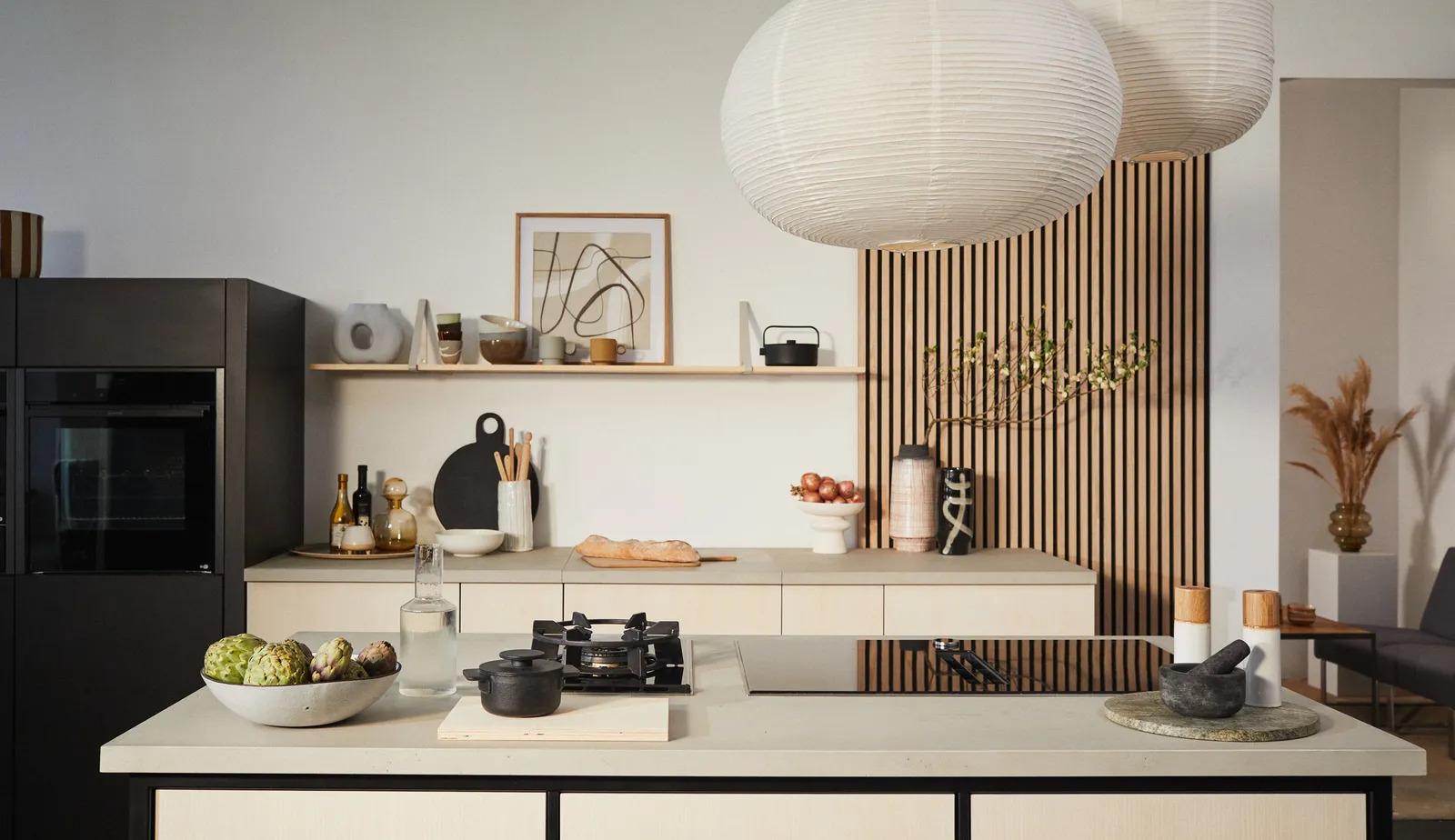
Back to Basics
In recent years, a unique interior design style has made its way into homes around the world, blending two seemingly distant yet surprisingly similar cultures: Japanese and Scandinavian.
This is the Japandi style, which combines Nordic minimalism with the Japanese philosophy of Wabi-Sabi.
More than just a way to decorate a home, Japandi represents a lifestyle—a holistic approach to living in and interacting with one’s spaces. It can be applied to any room in the house, from the bedroom to the living room, the study, or the kitchen.
The kitchen, in particular, is often designed solely for functionality. Yet, there is a world beyond appliances and furnishings—a world that allows you to embrace Japandi philosophy even in this space.
But what exactly is Japandi? What defines it? And how can you create a Japandi-inspired kitchen?
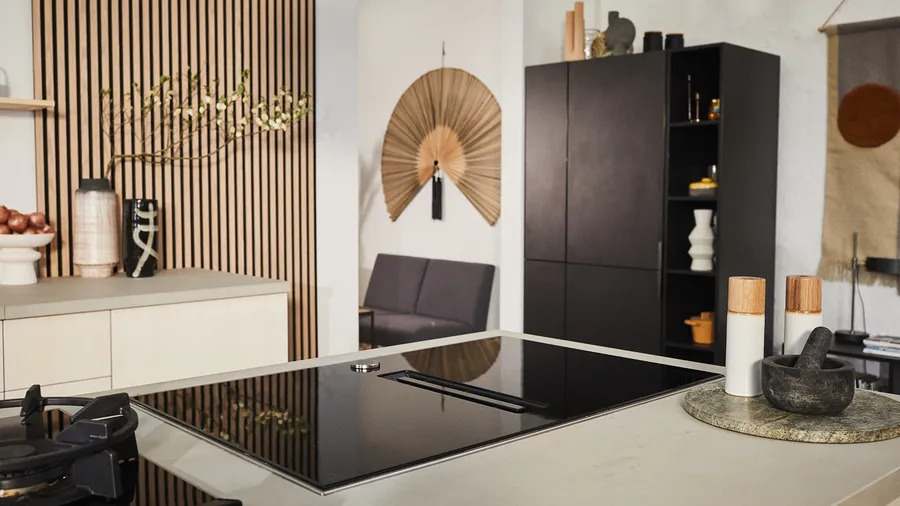
What Is Japandi?
The name says it all: Japandi is a blend of Japanese and Scandinavian styles, a trend that has gained popularity in the world of interior design.
In essence, it combines Scandinavian functionality with Japanese minimalism, aiming to unite art, nature, comfort, and simplicity.
Japandi is deeply influenced by the Japanese aesthetic of Wabi-Sabi, which emphasizes simplicity and the acceptance of imperfection and transience, along with the Scandinavian concept of hygge, which embodies comfort, well-being, and coziness. Together, these concepts create a harmonious hybrid.
The result is a focus on clean lines, bright spaces, and a balance of light and dark tones, enhanced by hand-crafted or carefully chosen objects. Japandi design is never sparse; it is intentional—favoring a few, meaningful items for a full life.
Characteristics of Japandi Style
- Colors
- Materials
- Space
- Nature

Colors: From Contrast to Harmony
Japandi merges the soft, neutral tones of Scandinavian design with the darker, earthy shades of Japanese style, drawing inspiration from nature. This interplay of contrasts creates a unique harmony, combining charcoal, anthracite, blue, and brown with white, ivory, ochre, and various shades of gray.
Green is a must, appearing in hues ranging from sage to celadon and emerald, reflecting the deep connection to nature that both cultures share.
Materials: Simplicity and Nature
Wood is the cornerstone of Japandi design, whether left in its natural tone to highlight its grain or painted in colors typical of the style.
Raw textiles like linen and jute are often used, paired with minimal decor, preferably of high-quality craftsmanship. Wicker also plays a central role, blending seamlessly into the aesthetic.
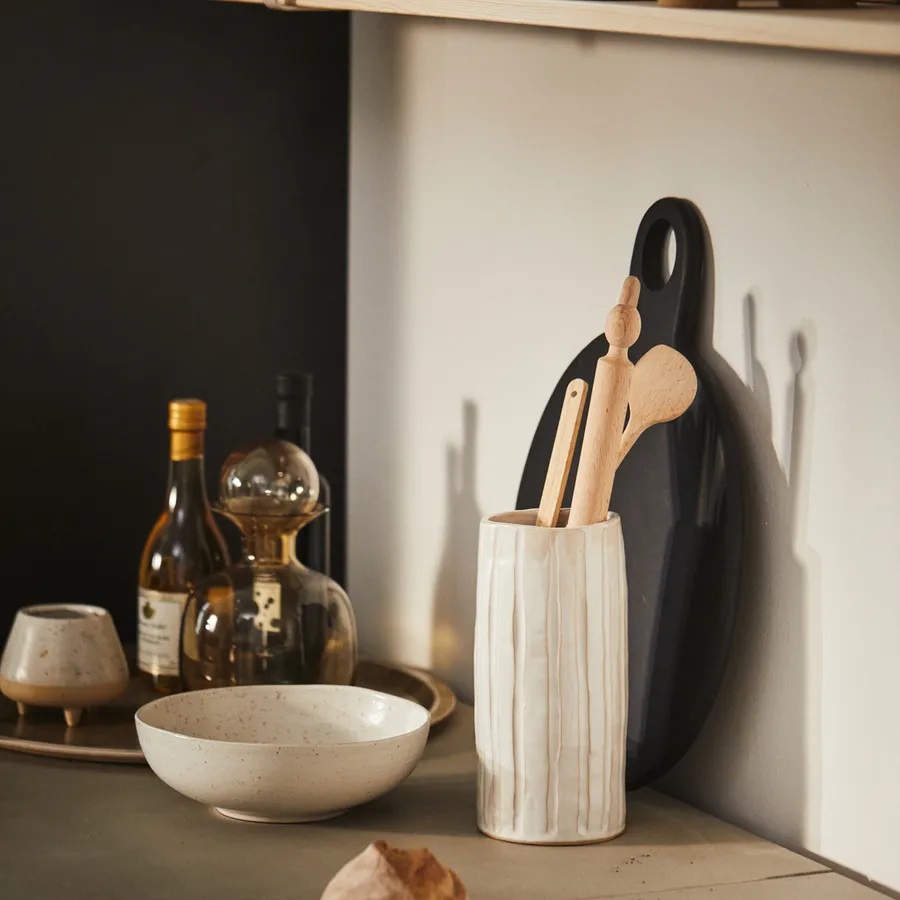

Space: The Art of Emptiness
Filling a space is not the goal of Japandi. In fact, the more open space there is, the more aligned you are with this philosophy. Minimalism and the concept of empty space are cherished by both Japanese and Scandinavian traditions.
If you choose to add wall art or decorations, opt for nature-themed items or typographic prints, avoiding bright colors and keeping it minimal.
Nature: Energy Through Plants
In both Japan and Scandinavia, nature, plants, and environmental sustainability hold great importance.
In Japandi decor, live greenery is essential—not just as decoration but as a source of positive energy. Bonsai, herbs, bamboo, evergreens, mini greenhouses, or even zen tabletop gardens fit perfectly. Consider combining these with azaleas, camellias, or red maples for a unique touch of harmony.
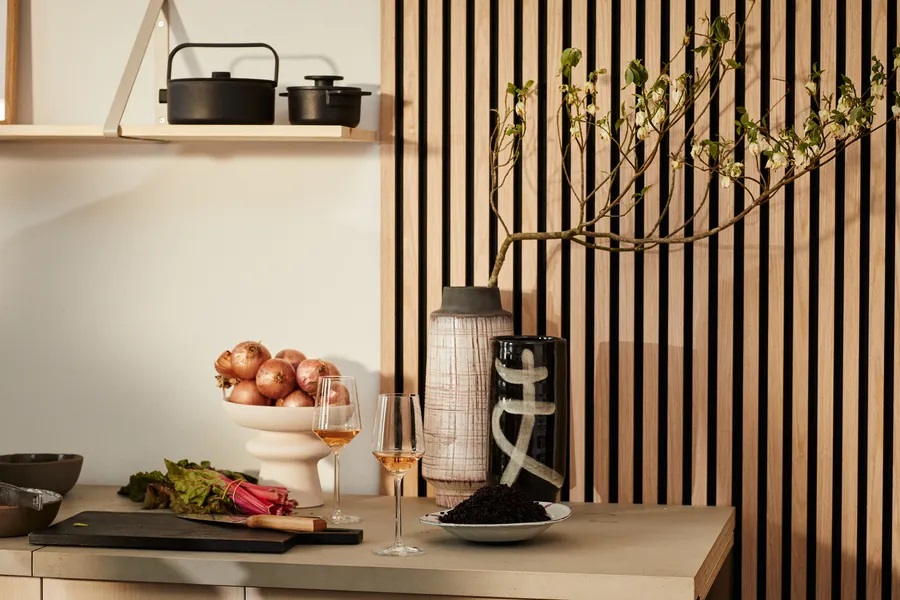
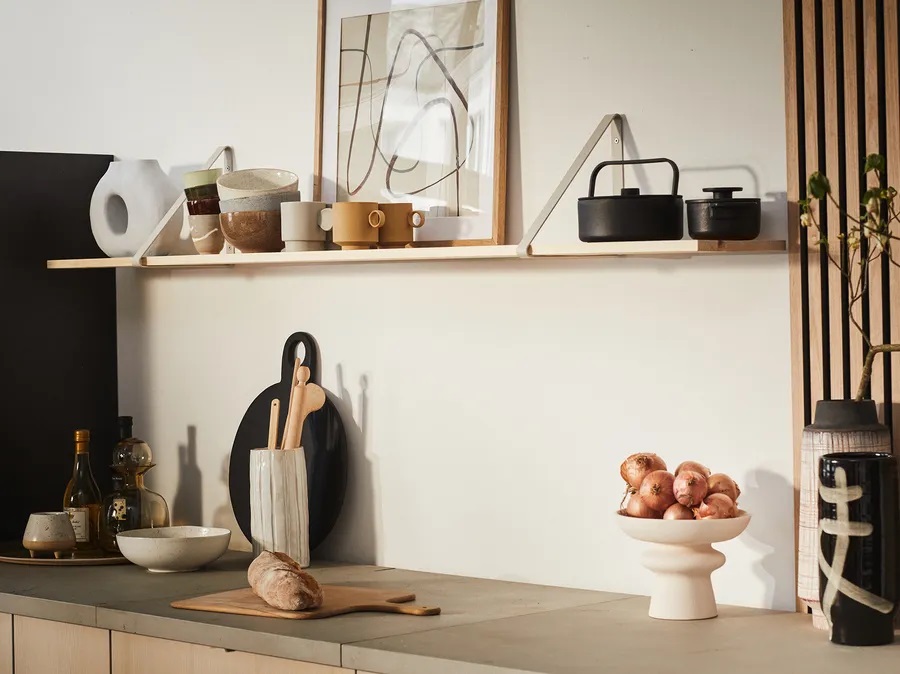
How to Create a Japandi Kitchen
To design a Japandi-inspired kitchen, start with a palette of calming colors and choose furniture and accessories made from natural materials.
Wood is an excellent foundation, with ash or birch plywood cabinets as an example.
Begin with a neutral base, such as white or beige, and introduce accent colors in a subtle, balanced way. For instance, pair black or ochre accents with naturally light wood and pale walls for a restrained yet striking effect.
To enhance the Japandi vibe, focus on natural materials. Add rice paper lampshades, clay vases, wicker chairs, ceramics, and a wooden dining table. Displaying fruits and vegetables as decor can also add a functional yet aesthetic touch.
Above all, prioritize a modern design that fosters tranquility. Be selective about what you display, opting for quality over quantity. Choose items that bring you joy, whether because of their craftsmanship, material quality, or sentimental value.
Combining Functionality and Aesthetics
The kitchen is, after all, a functional space where everything must be within easy reach. How can you merge practicality with Japandi style?
At NEFF, appliances are both smart and seamlessly integrated into Japandi interiors. For example:
- The Slide&Hide® oven features a door that fully retracts, allowing you to work freely without occupying unnecessary space.
- Retractable stovetop hoods and built-in cabinet hoods provide ventilation without dominating the room’s design.
- A dark induction cooktop complements the contrast between Scandinavian lightness and Japanese depth.
- A fully integrated dishwasher eliminates visible handles or controls, blending perfectly with cabinetry.
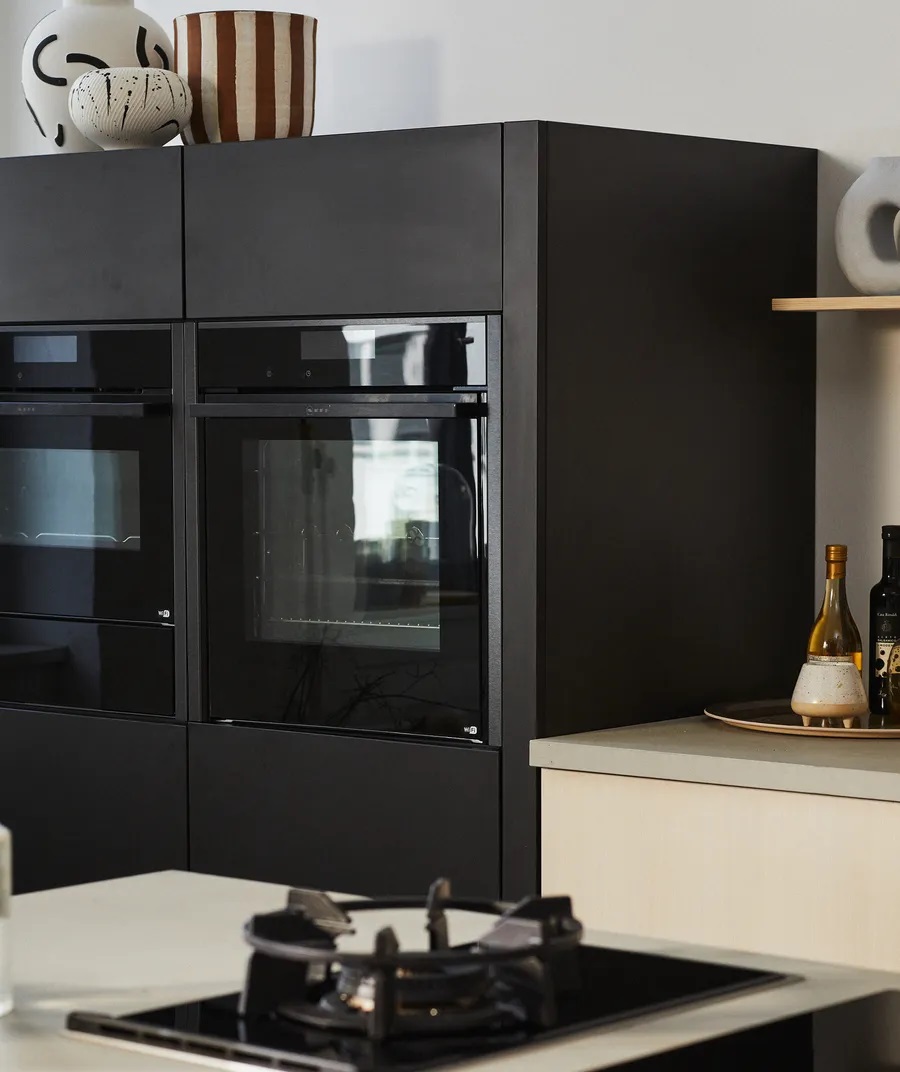
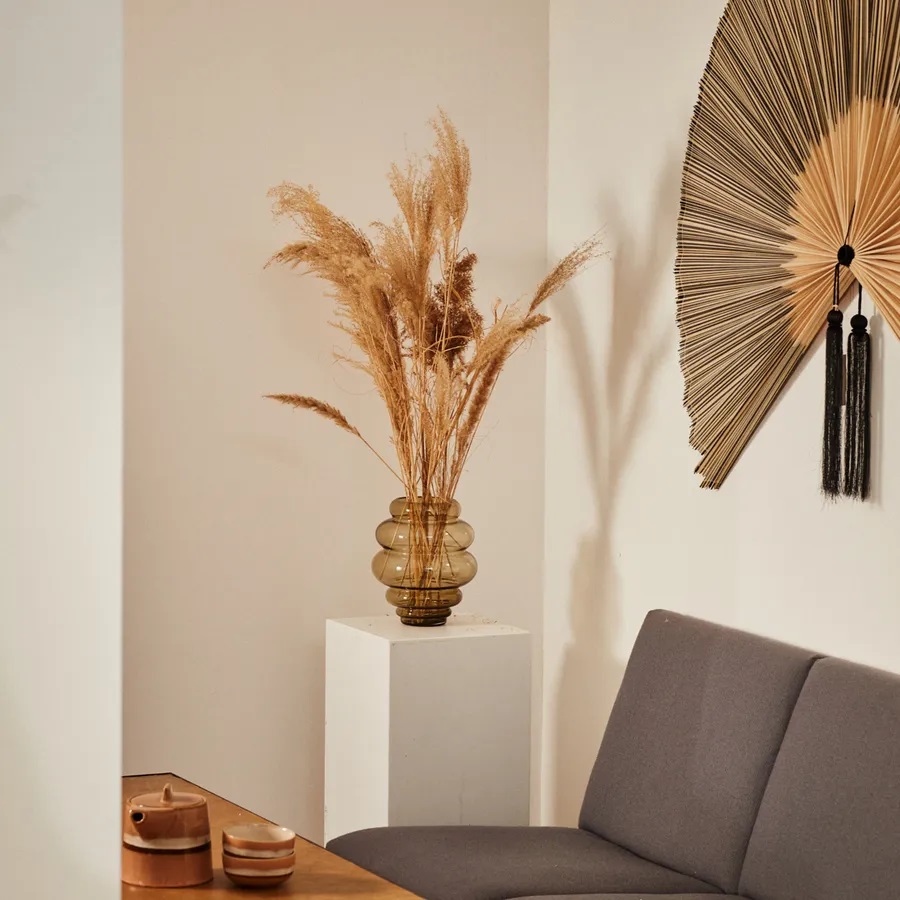
Extending Japandi Style Throughout the Home
If you’d like to incorporate Japandi into other parts of your home, consider these tips:
- Select a few well-crafted, functional furnishings, blending design with artisan pieces.
- Prioritize natural materials like wood and straw, which contribute to the harmony of contrasting colors.
- Combine raw and glossy textiles, such as linen, cotton, and jute with silk or velvet.
- Opt for light floors and upholstery—parquet is ideal, especially in lighter tones.
- Choose warm lighting to create a welcoming atmosphere, ideally relying on natural light complemented by soft, airy curtains.
Sustainability as a Core Value
Japandi emphasizes sustainability, with its use of natural materials and simple design making it a perfect choice for eco-friendly living.
As more people prioritize green aesthetics, Japandi’s popularity continues to grow—proving that simplicity and mindfulness can indeed be beautiful.
